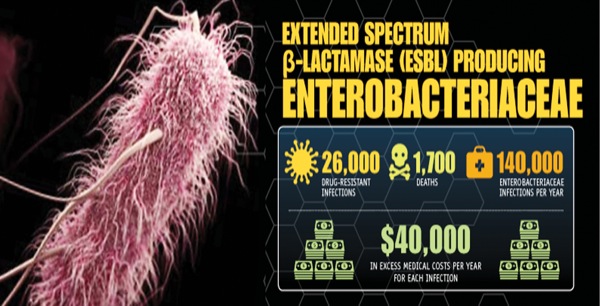The Silent Threat: Understanding ESBL Infections and Safeguarding Your Health
ESBL infections, also known as Extended-Spectrum Beta-Lactamase infections, are a growing concern worldwide. It is important to raise awareness and understanding about this silent threat to combat its impact on public health.

Understanding ESBL Infections
What are ESBL infections?
ESBL infections are caused by bacteria that produce enzymes called Extended-Spectrum Beta-Lactamases. These enzymes can break down and render ineffective a wide range of antibiotics, including beta-lactam antibiotics such as penicillins and cephalosporins. Common bacteria associated with ESBL infections include Escherichia coli and Klebsiella pneumoniae.
Causes and risk factors
ESBL infections have emerged and spread due to various factors, including the overuse and misuse of antibiotics, inadequate infection control measures, and the international travel of drug-resistant strains. Both healthcare-associated and community-acquired infections can occur. High-risk groups and individuals include those with weakened immune systems, individuals with prolonged hospital stays, and those who have undergone invasive medical procedures.
Signs, symptoms, and complications
Signs and symptoms of ESBL infections can vary depending on the site of infection, but common manifestations include urinary tract infections, wound infections, bloodstream infections, and respiratory tract infections. Complications can arise, such as sepsis, organ failure, and increased mortality rates. Early detection and proper diagnosis are crucial for effective treatment and prevention of complications.
Diagnosis and Treatment of ESBL Infections
Diagnostic methods
Accurate and timely diagnosis of ESBL infections is essential for effective treatment. Laboratory tests and techniques are used to identify ESBL-producing bacteria, including phenotypic tests and molecular methods. However, diagnosing ESBL infections can be challenging due to the complexity of the enzymes and the limitations of current diagnostic tools.
Treatment options
When treating ESBL infections, antibiotic susceptibility testing is crucial to determine the most effective antibiotics. However, ESBL-producing bacteria are often resistant to multiple antibiotics, limiting treatment options. Alternative therapies, such as combination antibiotic therapy or the use of newer antibiotics, may be considered. It is important to note that responsible antibiotic use is essential to prevent the development and spread of antibiotic resistance.
Infection control and prevention strategies
Preventing the spread of ESBL infections requires robust infection control practices in healthcare settings. This includes proper hand hygiene, isolation precautions, and appropriate disinfection and sterilization procedures. Public health measures, such as surveillance and monitoring of ESBL infections, are also crucial. Additionally, promoting responsible antibiotic use, including reducing unnecessary prescriptions and ensuring appropriate dosing and duration, is essential in preventing the emergence and spread of ESBL infections.
FAQs on ESBL Infections
What is the difference between ESBL and MRSA?
ESBL infections and MRSA (methicillin-resistant Staphylococcus aureus) are both types of drug-resistant infections, but they differ in the mechanisms of resistance and the bacteria involved. ESBL infections are caused by bacteria that produce enzymes called Extended-Spectrum Beta-Lactamases, while MRSA is caused by a strain of Staphylococcus aureus that is resistant to methicillin and other beta-lactam antibiotics. Both types of infections require appropriate diagnosis and treatment.
Can ESBL infections be cured?
ESBL infections can be challenging to treat due to antibiotic resistance, but they can be managed and controlled. Treatment options depend on the specific bacteria and the site of infection. Antibiotic susceptibility testing helps determine the most effective antibiotics. However, recurrence and the development of complications are possible, so close monitoring and adherence to treatment plans are important for successful outcomes.
How can I protect myself from ESBL infections?
To protect yourself from ESBL infections, it is important to practice good hygiene, including regular handwashing with soap and water or using alcohol-based hand sanitizers. Avoid close contact with individuals who have known infections, and follow infection control measures in healthcare settings. Additionally, it is crucial to avoid the unnecessary use of antibiotics and only take them as prescribed by a healthcare professional. Completing the full course of antibiotics is important to prevent the development of antibiotic resistance. Stay informed about ESBL infections, their symptoms, and prevention strategies to take proactive measures in safeguarding your health.
Conclusion:
In conclusion, ESBL infections are a significant global health concern. Understanding the nature of these infections, their causes, and risk factors is crucial in combating their spread. Timely diagnosis, appropriate treatment, and infection control measures are essential in managing ESBL infections. By promoting responsible antibiotic use and practicing good hygiene, we can collectively work towards reducing the impact of ESBL infections on public health. Stay informed, follow preventive measures, and prioritize your health to safeguard against this silent threat.




